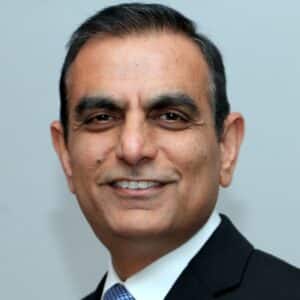
Bimal Kadikar is CEO and Founder of Transcend, which provides a platform for collateral, funding and liquidity optimization.
What are the key theme(s) for collateral optimization in 2021?
There’s a lack of clarity around the best practices for streamlining inventory, funding and liquidity at the desk level or across an enterprise. For most buy-side and sell-side firms, legacy technologies and business silos generate inefficiencies for optimization and collateral movements but new technologies can help bridge the gaps between these silos. However, few are able to apply complex decision making across harmonized supply and demand to achieve true collateral optimization across an enterprise.
There are three general models being used today: Desk aligned. Firms that have many different teams all managing collateral funding and decision making independently. Markets aligned. Firms with product, asset class or desk-specific teams that manage different types of margin, such as CCP, OTC derivatives, securities lending, repo or even TBA. Centralized. A few firms have a singular team focused on driving the optimization agenda, enabling them to manage margin across the enterprise. This includes operational support of the centralized funding and financial resource management teams in the front office.
While a growing number of sell-side firms are making the business-critical decision to drive efficiency by centralizing optimization, it’s a little different for buy-side firms, where it is important to have full transparency and capabilities on a fund-by-fund basis.
What should firms review heading into 2021?
Firms need a comprehensive approach for collecting reference data, positional, transaction data, etc. and establish connectivity for integrating that data in real-time. This can be aligned with the firm’s data strategy but requires specific business domain expertise to ensure data is appropriately usable for various use cases.
Connecting the data across CCPs, Tri-parties, Repos, internal back office, margin systems, financing systems, etc., doesn’t necessarily solve all problems as simple things like asset class definitions or liquidity classifications need to be harmonized across all these platforms.
Have a flexible infrastructure that lets you aggregate an enterprise view of supply, demand and obligations, or even business constraints whether financial or operational – all in real-time.
What should firms know about algorithms and automation?
After putting together a strong supply-demand-constraint framework, firms face practical hurdles such as how to automate complex yet dynamic recommendations. After all, for a large scale organization an optimization framework could recommend 15,000+ daily movements. The two primary elements that must be considered in this process are algorithms and automation.
Make sure that your firm’s optimization algorithms include all practical cost parameters, such as movement costs and replacement costs (in addition to financial drivers). Certain counterparties may not tolerate a lot of substitutions, whereas for example, CCPs and tri-party agents will allow many substitutions.
Once the algorithm has produced recommendations, automation will be key to realizing those benefits. Without automation, firms will miss the full benefit that the optimization engine is identifying.
Only by integrating linear and nonlinear costs can firms make holistic decisions regarding the best methods of optimization, given all constraints. Firms need a dynamic and flexible solution as optimization requirements will change over time; they must be able to plug their own algorithms into the overall framework so that they can make adjustments to their strategy as they grow and evolve.







